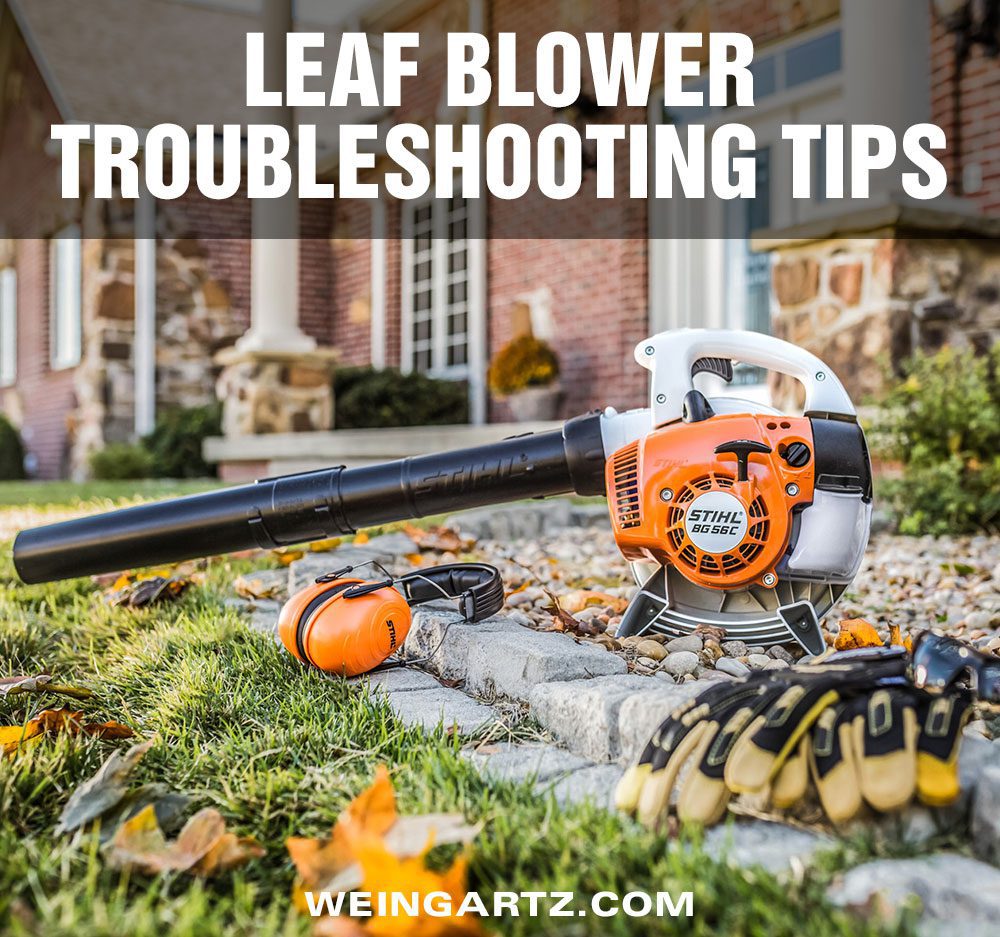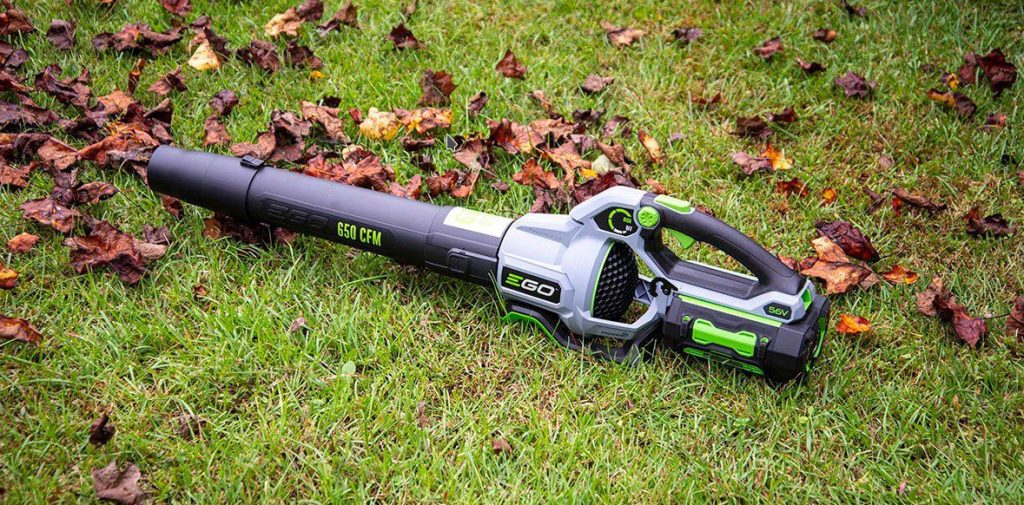If you are frustrated with your leaf blower not functioning correctly, don’t worry; you’re not alone!
This article will guide you through troubleshooting common issues hindering your leaf blower’s performance.
From starting problems to lack of power, we will explore simple tips and tricks to get your leaf blower up and running smoothly again.
So, say goodbye to the hassle of dealing with pesky leaves, and let’s troubleshoot those common issues together!
1. Leaf Blower Won’t Start
1.1. Check the Fuel
If your leaf blower won’t start, you should first check the fuel. Ensure there is enough fuel in the tank and that it is not old or contaminated. Stale or contaminated fuel can prevent the engine from starting.
If the fuel is old, drain the tank and fill it with fresh fuel. It’s also a good idea to check the fuel filter to ensure it is clean and not clogged. Additionally, make sure you use the correct fuel mixture for your leaf blower, as using the wrong fuel can also cause starting issues.
1.2. Inspect the Spark Plug
A faulty spark plug is another common reason a leaf blower may not start. Remove the spark plug and inspect it for signs of damage or wear. If the spark plug is dirty, clean it with a wire brush. If it is damaged or worn, replace it with a new one.
It’s also important to check the spark plug wire for any loose connections or damage. A vital spark is essential for starting the engine, so ensuring the spark plug is in good condition.
1.3. Examine the Ignition Switch
The ignition switch sends an electrical signal to the spark plug, which ignites the fuel-air mixture in the engine. If the ignition switch is faulty, it can prevent the leaf blower from starting.
Inspect the ignition switch for any loose connections or damage. Ensure the switch is in the “on” position and the contacts are clean. If you suspect the ignition switch is the problem, it may need replacing.
1.4. Clean or Replace the Carburetor
A dirty or clogged carburetor can also cause starting issues with a leaf blower. The Carburetor is responsible for mixing the fuel and air in the correct ratio for combustion.
Over time, dirt, Debris, and old fuel can build up in the Carburetor and restrict fuel flow. Remove the carburetor from the leaf blower and use a carburetor cleaner to dislodge any deposits. If cleaning the Carburetor does not solve the problem, it may need to be replaced.
1.5. Test the Starter Motor
When you pull the starter cord, the starter motor initiates the engine’s rotation. If the starter motor is faulty, it may be unable to turn the engine over, preventing the leaf blower from starting. To test the starter motor, remove the starter housing and inspect it for any damage. If the motor appears damaged or is not functioning correctly, it may need to be replaced.
1.6. Evaluate the Compression
Low engine compression can also cause a leaf blower to have difficulty starting. Engine compression refers to the pressure created inside the engine cylinder during combustion. If the compression is too low, the fuel may not ignite properly, resulting in starting issues. To evaluate the compression, you will need a compression tester. Remove the spark plug and insert the compression tester into the spark plug hole. Pull the starter cord several times and observe the reading on the compression tester. If the compression is below the manufacturer’s specifications, it may indicate a problem with the engine’s internal components, such as the piston rings or cylinder, and may require professional repair.
2. Leaf Blower Stalls or Loses Power
2.1. Ensure Adequate Fuel Flow
If your leaf blower stalls or loses power during operation, the first thing to check is the fuel flow. Ensure there is enough fuel in the tank and it is reaching the engine. Check the fuel lines for any kinks or blockages that may impede fuel flow. You should also inspect the fuel filter to ensure it is clean and not clogged. If the fuel filter or lines are damaged or clogged, they may need replacing.
2.2. Clean or Replace the Air Filter
A dirty or clogged air filter can restrict airflow to the engine, causing the leaf blower to stall or lose power. Remove the air filter and inspect it for dirt or Debris. If the air filter is dirty, gently tap it to remove loose Debris or wash it with soap and water. Allow the air filter to dry completely before reinstalling it. It should be replaced if the air filter is damaged or excessively dirty.
2.3. Inspect and Adjust the Carburetor
The Carburetor regulates the fuel and air mixture that enters the engine. If the Carburetor is not adjusted correctly, it can cause the leaf blower to stall or lose power. Inspect the Carburetor for any signs of damage or clogging, and clean it if necessary. You may need to adjust the Carburetor’s settings to ensure the proper fuel-to-air ratio. Refer to your leaf blower’s manual for instructions on adjusting the Carburetor, or consult a professional if you are unsure.
2.4. Check the Exhaust System
A clogged or restricted exhaust system can cause a leaf blower to stall or lose power. Inspect the exhaust muffler and spark arrestor for any obstructions or buildup of Debris. Clean them if necessary to ensure proper airflow. If the exhaust system is damaged or excessively clogged, it may need to be replaced.
2.5. Evaluate the Compression
Low engine compression can also contribute to stalling or loss of power in a leaf blower. Follow the steps outlined in section 1.6 to evaluate the engine’s compression. If the compression is low, it may indicate a problem with the engine’s internal components, such as the piston rings or cylinder, and may require professional repair.
2.6. Test the Carburetor Fuel Lines
Check the fuel lines connected to the Carburetor for any leaks or cracks. A fuel leak can disrupt the fuel flow and cause the leaf blower to stall or lose power. To test the fuel lines, inspect them visually for any damage or signs of leakage. If a fuel leak is detected, the fuel lines may need to be replaced.
3. Leaf Blower Overheats
3.1. Clear Debris from Cooling Vents
If your leaf blower is overheating, checking and clearing any debris blocking the cooling vents is essential. Over time, dust, dirt, and Debris can accumulate on the cooling vents, restricting airflow and causing the engine to overheat. Use a brush or compressed air to remove obstructions from the vents and ensure proper airflow.
3.2. Inspect Fuel Mixture
An incorrect fuel mixture can also contribute to overheating issues. Ensure you are using the correct fuel-to-oil ratio, as the manufacturer recommends. Using too much oil or not enough oil in the fuel mixture can cause the engine to run hot. Check the fuel tank and drain any old or contaminated fuel. Refill the tank with the proper fuel mixture to ensure optimal performance and prevent overheating.
3.3. Check for Clogged Air Filters
A clogged air filter can restrict airflow to the engine, leading to overheating. Remove the air filter and inspect it for dirt or Debris. Clean the air filter if it is dirty or replace it if necessary. Ensuring the air filter is clean and free from obstructions will help maintain proper airflow and prevent overheating.
3.4. Evaluate Engine Compression
Low engine compression can cause the leaf blower to overheat. Follow the steps outlined in section 1.6 to evaluate the engine compression. If the compression is below the manufacturer’s specifications, it may indicate a problem with the engine’s internal components, such as the piston rings or cylinder, and may require professional repair.
3.5. Adjust Fuel-to-Air Mixture
An improper fuel-to-air mixture can contribute to overheating. If the leaf blower is running too lean (too much air, not enough fuel), it can cause the engine to overheat. Adjust the Carburetor to ensure the proper fuel-to-air ratio. Refer to your leaf blower’s manual for instructions on adjusting the Carburetor, or consult a professional if unsure.
3.6. Monitor Operating Conditions
Proper operating conditions are essential to prevent overheating. Avoid using the leaf blower in extreme heat or prolonged use without breaks. Allow the leaf blower to cool down between use and ensure the cooling vents are not blocked. Monitoring the operating conditions and using the leaf blower within the recommended guidelines will help prevent overheating and prolong the machine’s life.
4. Leaf Blower Produces Excessive Vibration
4.1. Inspect and Tighten Loose Fasteners
Loose fasteners can cause excessive vibration in a leaf blower. Inspect the machine and tighten any loose screws, nuts, or bolts. Pay close attention to the engine housing, handle, and other components contributing to the vibration. Tightening the fasteners will help reduce excessive vibration and ensure the smooth operation of the leaf blower.
4.2. Check for Damaged or Imbalanced Blades
Damaged or imbalanced blades can also cause excessive vibration. Inspect the blades for any signs of damage, such as chips or cracks. Replace any damaged blades immediately. If the blades appear in good condition, they may be imbalanced. Imbalanced blades can be balanced by adding small weights to the lighter side of the blade. Balancing the blades will help reduce vibration and improve overall performance.
4.3. Verify Engine Mounts
If the engine mounts are worn or damaged, it can result in excessive vibration. Inspect the engine mounts for any signs of wear or damage. If the mounts appear worn or are no longer securely holding the engine, they may need to be replaced. Proper engine mounting is essential to reduce vibration and ensure smooth operation of the leaf blower.
4.4. Examine the Fan
A damaged or worn fan can cause excessive vibration. Inspect the fan for any signs of damage, such as cracks or missing blades. If the fan is damaged or worn, it should be replaced. Operating the leaf blower with a damaged fan can cause further damage to the machine and increase vibration.
4.5. Evaluate the Flywheel
The flywheel is another component that can contribute to excessive vibration. Inspect the flywheel for any signs of damage or misalignment. If the flywheel is damaged, it may need to be replaced. Misaligned flywheels can be adjusted to ensure proper alignment. Correcting any issues with the flywheel will help reduce vibration and improve the performance of the leaf blower.
4.6. Test the Drive Shaft
A malfunctioning or damaged drive shaft can also cause excessive vibration. Inspect the drive shaft for any signs of damage or wear. If the drive shaft is damaged, it may need to be replaced. Also, check for loose or worn connections between the drive shaft and the engine or blower tube. Properly functioning drive shafts are crucial for reducing vibration and maintaining smooth operation.
5. Leaf Blower Emits Excessive Smoke
5.1. Confirm the Use of the Proper Fuel/Oil Mixture
Excessive smoke from a leaf blower can indicate an improper fuel/oil mixture. Ensure you are using the correct fuel-to-oil ratio as the manufacturer recommends. Using too much oil or not enough oil in the fuel mixture can cause the engine to produce excessive smoke. Drain any old or contaminated fuel from the tank and refill it with the proper fuel mixture to resolve the issue.
5.2. Clean or Replace Air Filter
A clogged or dirty air filter can also cause the leaf blower to emit excessive smoke. Remove the air filter and inspect it for dirt or Debris. Clean the air filter if it is dirty, or replace it if necessary. A clean air filter will ensure proper airflow, preventing the engine from running rich and producing excessive smoke.
5.3. Inspect the Fuel Line
A clogged or blocked fuel line can cause the leaf blower to run rich, producing excessive smoke. Inspect the fuel line for any signs of damage, clogs, or kinks. If any issues are detected, replace the fuel line to restore proper fuel flow. It’s also important to check that the fuel cap is venting correctly, as a clogged vent can cause the engine to run rich and emit excessive smoke.
5.4. Check for Cracked Cylinder or Piston Rings
A cracked cylinder or worn piston rings can contribute to the production of excessive smoke. Inspect the cylinder and piston rings for any signs of damage or wear. If a crack or worn piston rings are identified, professional repair may be necessary to resolve the issue. Addressing these internal engine components will help eliminate the excessive smoke.
5.5. Evaluate the Spark Arrestor Screen
A clogged or dirty spark arrestor screen can cause the engine to produce excessive smoke. Inspect the spark arrestor screen for any signs of blockage or buildup. Clean the screen or replace it if necessary. A clean spark arrestor screen will ensure proper exhaust flow and reduce the smoke emitted by the leaf blower.
5.6. Adjust Carburetor
An improperly adjusted carburetor can cause the engine to run rich, producing excessive smoke. Check the Carburetor’s settings and adjust them to ensure the proper fuel-to-air mixture. Refer to your leaf blower’s manual for instructions on adjusting the Carburetor, or consult a professional if unsure. Correctly adjusting the Carburetor will help eliminate the excessive smoke.
6. Leaf Blower Has Weak Airflow
6.1. Inspect and Clean the Air Filter
A dirty or clogged air filter can significantly reduce the airflow of a leaf blower. Remove the air filter and inspect it for dirt or Debris. Clean the air filter if it is dirty, or replace it if necessary. A clean air filter will ensure adequate airflow and improve the overall performance of the leaf blower.
6.2. Remove Debris from the Impeller
The Impeller is responsible for generating the airflow in a leaf blower. Over time, Debris such as leaves, twigs, and other materials can become lodged in the Impeller, causing a restriction in airflow. Turn off the leaf blower and use a brush or compressed air to remove debris from the Impeller. Clearing the Impeller of Debris will help restore the airflow and improve the leaf blower’s performance.
6.3. Check for Damaged or Worn Blades
Damaged or worn blades can also contribute to weak airflow in a leaf blower. Inspect the blades for any signs of damage, such as chips or cracks. Replace any damaged blades immediately. If the blades appear in good condition, check for any signs of wear or dullness. Dull blades may need to be sharpened or replaced to ensure optimal airflow and performance.
6.4. Verify the Integrity of the Blower Tube
The blower tube is the pathway through which the airflow is directed in a leaf blower. Inspect the blower tube for any cracks, blockages, or loose connections. A damaged or blocked blower tube can restrict airflow and perform poorly. Repair or replace any damaged blower tubes to restore the proper airflow and improve the overall performance of the leaf blower.
6.5. Adjust the Engine Speed
The engine speed or throttle setting can affect the airflow of a leaf blower. If the engine speed is too low, it may result in weak airflow. Consult your leaf blower’s manual to determine the appropriate engine speed settings for optimal airflow. Adjust the engine speed accordingly to improve the leaf blower’s performance.
6.6. Evaluate the Compression
Low engine compression can also contribute to weak airflow in a leaf blower. Follow the steps outlined in section 1.6 to evaluate the engine’s compression. If the compression is below the manufacturer’s specifications, it may indicate a problem with the engine’s internal components, such as the piston rings or cylinder, and may require professional repair.
7. Leaf Blower Starts But Won’t Rev Up
7.1. Check Fuel Quality and Mixture
If your leaf blower starts but won’t rev up, the first thing to check is the fuel quality and mixture. Make sure that you are using fresh fuel that is not contaminated. Stale or contaminated fuel can cause the engine to struggle to rev up. Also, verify that you are using the correct fuel-to-oil ratio as recommended by the manufacturer. Using the wrong fuel mixture can result in poor engine performance. If necessary, drain the old fuel from the tank and refill it with fresh fuel at the correct ratio.
7.2. Clean or Replace the Air Filter
A dirty or clogged air filter can restrict airflow to the engine, preventing it from revving up properly. Remove the air filter and inspect it for dirt or Debris. Clean the air filter if it is dirty, or replace it if necessary. A clean air filter will allow proper air intake and help the engine rev up smoothly.
7.3. Examine the Spark Arrestor
A clogged or dirty spark arrestor can also prevent the engine from revving. Inspect the spark arrestor for any signs of buildup or blockage. Clean the spark arrestor if necessary to ensure proper exhaust flow. A clean spark arrestor will allow the engine to breathe correctly, helping it rev up more quickly.
7.4. Inspect the Carburetor
A faulty carburetor can prevent the engine from revving up properly. Inspect the Carburetor for any signs of damage or clogging. Clean the Carburetor if necessary to remove any debris or blockages. If the Carburetor appears damaged or non-functional, it may need to be replaced. An effectively functioning carburetor is crucial for optimum engine performance.
7.5. Evaluate the Compression
Low engine compression can cause the engine to struggle when revving up. Follow the steps outlined in section 1.6 to evaluate the engine’s compression. If the compression is below the manufacturer’s specifications, it may indicate a problem with the engine’s internal components, such as the piston rings or cylinder, and may require professional repair.
7.6. Test the Throttle Trigger
A malfunctioning throttle trigger can also prevent the engine from revving up properly. Inspect the throttle trigger for any signs of damage or wear. Ensure that it is not stuck or jammed. If the throttle trigger is damaged or non-functional, it may need to be replaced. A properly functioning throttle trigger is essential for controlling the engine speed and allowing it to rev up.
8. Leaf Blower Battery Won’t Hold a Charge
8.1. Verify Proper Battery Maintenance
If your leaf blower battery won’t hold a charge, the first step is to confirm that you follow proper battery maintenance. Ensure that you are storing the battery in a cool, dry place and fully charged before each use. Avoid overcharging the battery, as this can shorten its lifespan. Follow the manufacturer’s recommendations for proper battery maintenance to ensure optimal performance.
8.2. Examine the Battery Connections
Loose or corroded battery connections can prevent the battery from holding a charge. Inspect the battery terminals, ensuring that they are clean and securely connected. If there is any corrosion on the terminals, clean them with a wire brush or battery terminal cleaner. Tighten any loose connections to ensure a reliable electrical connection.
8.3. Check for Battery Damage
Inspect the battery for any signs of physical damage, such as cracks or leaks. If the battery is damaged, it may not be able to hold a charge and will need to be replaced. Additionally, check for any bulging or swelling of the battery. Bulging or swelling typically indicates an internal issue and should be addressed by replacing the battery.
8.4. Test the Charger
A faulty charger can also prevent the battery from holding a charge. Test the charger using a multimeter or alternative battery to determine if it functions correctly. If the charger is not working, it may need to be replaced. It’s essential to use a charger designed for your leaf blower battery to ensure compatibility and optimal charging performance.
8.5. Evaluate Battery Age and Lifespan
Over time, batteries will naturally degrade and lose their ability to hold a charge. Evaluate the age of your leaf blower battery and consider its expected lifespan. If the battery is old or heavily used, it may be time to replace it. The average lifespan of a leaf blower battery can vary, so refer to the manufacturer’s recommendations for battery replacement.
8.6. Assess Environmental Conditions
Extreme temperatures can have a significant impact on battery performance. If the leaf blower is used in extremely hot or cold conditions, the battery may struggle to hold a charge. Avoid exposing the battery to temperatures outside the recommended operating range. Store the battery in a climate-controlled environment to help maintain its performance.
9. The Leaf Blower Pull Cord Won’t Retract
9.1. Inspect and Lubricate the Recoil Starter
If the pull cord on your leaf blower won’t retract, the recoil starter may be the culprit. Inspect the recoil starter assembly for any signs of damage or wear. Clean the assembly if it is dirty, and lubricate the moving parts with a light machine oil or silicone spray. Lubrication can help reduce friction and allow for the smooth operation of the recoil starter.
9.2. Verify Spring Tension
The recoil starter relies on a spring to retract the pull cord. If the spring tension is too loose, it may be unable to fully retract the cord. Inspect the spring for any signs of damage or stretching. If the spring appears damaged or worn, it may need to be replaced. Adjusting the spring tension may also be necessary to ensure proper retraction of the pull cord.
9.3. Replace a Broken Starter Rope
A broken or frayed starter rope can prevent the cord from retracting. Inspect the starter rope for any signs of damage. If the rope is broken or frayed, it must be replaced. Carefully remove the old rope and attach a new one according to the manufacturer’s instructions. A properly functioning starter rope is essential for the smooth operation of the recoil starter.
9.4. Check for Obstructions
Obstructions or Debris in the recoil starter assembly can prevent the pull cord from retracting. Remove the recoil starter housing and inspect it for any blockages. Clean the assembly to remove any debris or obstructions that may interfere with the cord retraction. Clearing the assembly of obstructions will allow for proper operation of the recoil starter.
9.5. Evaluate the Engine Flywheel Key
A sheared or damaged flywheel key can prevent the recoil starter from functioning correctly. The flywheel key is a small part that connects the flywheel to the engine’s crankshaft. The recoil starter may not engage properly if the flywheel key is sheared or damaged. Inspect the flywheel key for any signs of damage. If a problem is detected, the flywheel key must be replaced.
9.6. Test the Recoil Starter Assembly
If all else fails, testing the recoil starter assembly may be necessary. Remove the recoil starter housing and manually turn the flywheel. Observe the movement of the recoil starter mechanism and check for any irregularities or binding. If the assembly does not operate smoothly, it may need to be repaired or replaced. Consult a professional if you are unsure how to test or repair the recoil starter assembly.
10. Leaf Blower Trigger Switch or Variable Speed Control Not Working
10.1. Inspect the Trigger Switch
If the trigger switch or variable speed control on your leaf blower is not working, the first step is to inspect the switch. Check for any signs of damage or loose connections. Clean the switch contacts with compressed air or a contact cleaner to remove any dirt or Debris affecting its functionality. If the switch is damaged or non-functional, it must be replaced.
10.2. Check Variable Speed Control
If your leaf blower has a variable speed control, ensure it functions correctly. Inspect the control and check for any signs of damage or wear. Clean the control to remove any dirt or Debris affecting its operation. If the variable speed control is damaged, it may need to be replaced.
10.3. Verify Wire Connections
Loose or damaged wire connections can prevent the trigger switch or variable speed control from working correctly. Inspect the wire connections and ensure that they are securely attached. If any wires are loose or damaged, they will need to be repaired or replaced. Properly functioning wire connections are essential for the operation of the trigger switch and variable speed control.
10.4. Test the Switch/Control with a Multimeter
Using a multimeter, you can test the continuity and functionality of the trigger switch or variable speed control. Set the multimeter to the appropriate setting and carefully test the switch or control. Refer to your leaf blower’s manual or consult a professional if you are unsure how to use a multimeter for testing. If the multimeter indicates a problem with the switch or control, it may need to be replaced.
10.5. Evaluate the Motor Brushes (if applicable)
Some leaf blowers have motor brushes that can wear out over time, affecting the functionality of the trigger switch or variable speed control. Consult your leaf blower’s manual to determine if it has motor brushes and how to access them. Inspect the motor brushes for any signs of wear or damage. If the brushes appear worn or damaged, they must be replaced. Replacing the motor brushes can restore the proper function of the trigger switch or variable speed control.
10.6. Replace Faulty Switch or Control
If all else fails and the trigger switch or variable speed control is not functioning correctly, it may need to be replaced. Consult your leaf blower’s manual or contact the manufacturer for information on obtaining a replacement switch or control. A qualified professional should only do replacement if you are unsure about the process. Replacing the faulty switch or control can restore full functionality to your leaf blower.








































